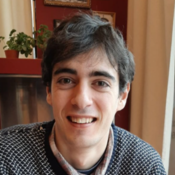Theoretical seminar | 24 November 2021
Online

Light scattering, by its nature, is a non-conservative process. The scatterer, modeled as a collection of lossy oscillators, is driven by an incident beam and dissipates energy in the form of radiation and absorption. Their underlying Hamiltonians are thus non-Hermitian. From the traditional viewpoint, losses have been mostly regarded as parasitic terms which decrease the efficiency of photonic devices. However, important developments in the emerging field of non-Hermitian optics are drastically shifting this perspective. In my talk, I will discuss my research in the field of all-dielectric nanophotonics, and revisit the traditional scattering problem with notions of non-Hermitian modal analysis. I will rediscover the physics behind anapoles and hybrid anapoles as well as their transients, and in passing, comment on the physical significance of toroidal moments. I will introduce a new strategy to reach the superscattering regime based on the Friedrich-Wintgen mechanism, and finally propose a simple platform to observe bulk Fermi arcs and the non-Hermitian singularities known as exceptional points in an isolated high-index nanoparticle.
Canós Valero, A., Gurvitz, E. A., Benimetskiy, F. A., Pidgayko, D. A., Samusev, A., Evlyukhin, A. B., ... & Shalin, A. S. (2021). Theory, observation, and ultrafast response of the hybrid anapole regime in light scattering. Laser & Photonics Reviews, 2100114.
Kuznetsov, A. V., Valero, A. C., Tarkhov, M., Bobrovs, V., Redka, D., & Shalin, A. S. (2021). Transparent hybrid anapole metasurfaces with negligible electromagnetic coupling for phase engineering. Nanophotonics.
Valero, A. C., Shamkhi, H., Kupriianov, A. S., Tuz, V. R., Pavlov, A. A., Redka, D., ... & Shalin, A. S. (2021). Superscattering Empowered by Bound States in the Continuum. arXiv preprint arXiv:2105.13119
Last news
-
-
Butterfly Effect: ITMO Researchers Create Colorful Perovskite Films for Optoelectronics
-
Scientific Show, Lectures, and Lab Tours: Recap of Physics Day 2025 at ITMO
-
ITMO-Developed Metasurface Makes Optical Chips 2x More Efficient
-
“Combing” Light: ITMO Researchers Find Reliable and Fast Way to Transmit Data in Space
